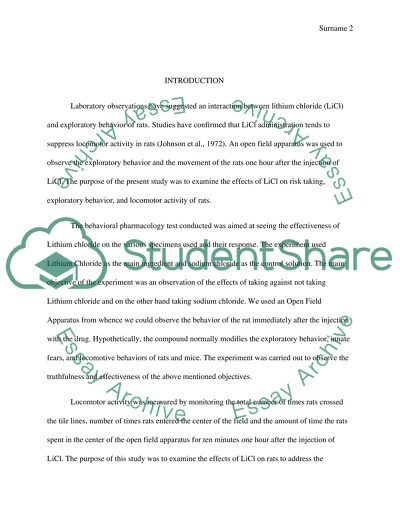Cite this document
(The Influence of Lithium Chloride on Rats Exploratory Behavior Assignment, n.d.)
The Influence of Lithium Chloride on Rats Exploratory Behavior Assignment. Retrieved from https://studentshare.org/health-sciences-medicine/1683250-neuroscience
The Influence of Lithium Chloride on Rats Exploratory Behavior Assignment. Retrieved from https://studentshare.org/health-sciences-medicine/1683250-neuroscience
(The Influence of Lithium Chloride on Rats Exploratory Behavior Assignment)
The Influence of Lithium Chloride on Rats Exploratory Behavior Assignment. https://studentshare.org/health-sciences-medicine/1683250-neuroscience.
The Influence of Lithium Chloride on Rats Exploratory Behavior Assignment. https://studentshare.org/health-sciences-medicine/1683250-neuroscience.
“The Influence of Lithium Chloride on Rats Exploratory Behavior Assignment”, n.d. https://studentshare.org/health-sciences-medicine/1683250-neuroscience.


